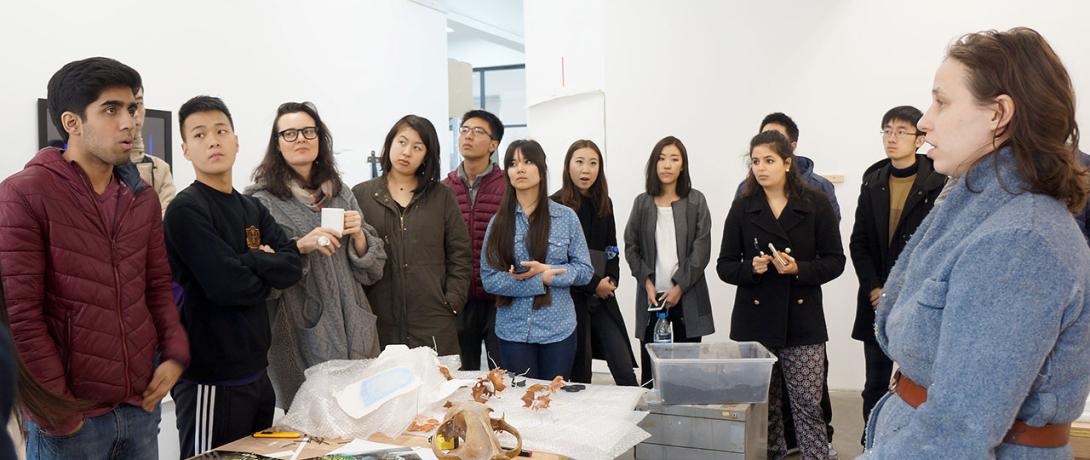On March 11, 2015, students in Professor Francesca Tarocco’s Contemporary Art, Architecture and New Media in China class traveled to the Songjiang district of Shanghai for a contemporary art studio tour by artists Maya Kramer and Jin Shan.
Propped up in a one-way mirror vitrine, Kramer cast a tiger skull from laundry detergent to glow beneath a black light. Over time, it crumbled beneath a steady drip of water into clumps of bright phosphorus pulp. What remains of Kramer’s ephemeral piece, titled There Is Nothing You Can Measure Anymore (2010), exists in a series of photographs showing the process of the skull’s decay as an allusion to environmental degradation.
It was fascinating for students to witness how Kramer forms a dialogue between pollutants and natural components. Raw materials, including duck and chicken feathers—even coal dust—are highly accessible. Kramer uses these for her poetically foreboding arrangement of coal-based feathers in Against The Wind (2014) that explores the conflicted physical and psychological engagement with humanity and nature.
“In China, all these things are happening at the same time. There’s this moment of modernity and contemporaneity, and something tactile in those moments of life happening in the gaps of things,” Kramer said when asked what drives her to create in Shanghai.
Shan, however, engages the problems of the modern world—especially the varied conditions of authority—with a twist of humor and a lot of silicone. From a life-sized silicone replica depicting a less modest version of himself to once installing an oversized silicone policeman from the ceiling, Shan aims to draws audiences face-to-face with social, cultural, and political confrontation.
Students agreed that seeing the process of unfinished pieces in the studio was a strong juxtaposition to merely drifting through pristine gallery space. They realized just how much ingenuity, time, and tireless effort are poured into bringing such works to life, and how much it pays close attention to the human soul. There are unexpected complexities of being an artist moved by necessity. Artists are their own self-taught designers, engineers, scientists, laborers, and entrepreneurs, acquiring a diverse skill set according to the needs of their work.
Imbued with social responsibility and environmental solicitude, these works of art presented a sensory opportunity for its young, intelligent audience to reflect on how they interact with the world around them.
Written by Charlotte San Juan


